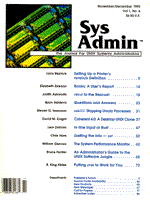| Command |
Usage |
| ! [command____] |
Invoke an interactive shell on the local machine. If there are arguments, the first is taken to be a command to
execute directly, with the rest of the arguments as its arguments. |
| binary |
Set the file transfer type to support binary image transfer. |
| bye |
Terminate the FTP session with the remote server and exit ftp. An end of file will also terminate the session
and exit. |
| cd <directory> |
Change the working directory on the remote machine to <directory>. |
| get remote-file [local-file] |
Retrieve the remote-file and store it on the local machine. If the local file name is not specified, it is given
the same name it has on the remote machine, subject to alteration by the current case, ntrans, and nmap settings. The
current settings for type, form, mode, and structure are used while transferring the file. |
| help [command] |
Print informative message about the meaning of command. If given, ftp prints a list of the known
commands. |
| lcd [directory] |
Change the working directory on the local machine. If no directory is specified, the user's home directory is
used. |
| ls [remote-directory] [local-file] |
Print a listing of the contents of a directory on the remote machine. Works mostly like the UNIX ls
command. Common options a -l (for the traditional long listings), and -C to force listing pof files in columns. |
| mget remote-files |
Expand the remote-files on the remote machine and do a get for each file name thus produced. Unless
the -i option has been given when ftp was started, you will be prompted for transfer of each file. |
| pwd |
Print the name of the current working directory on the remote machine. |
| quit |
A synonym for bye. |
| remotehelp [command-name] |
Request help from the remote FTP server. If a command-name is specified it is supplied to the server as
well. |

